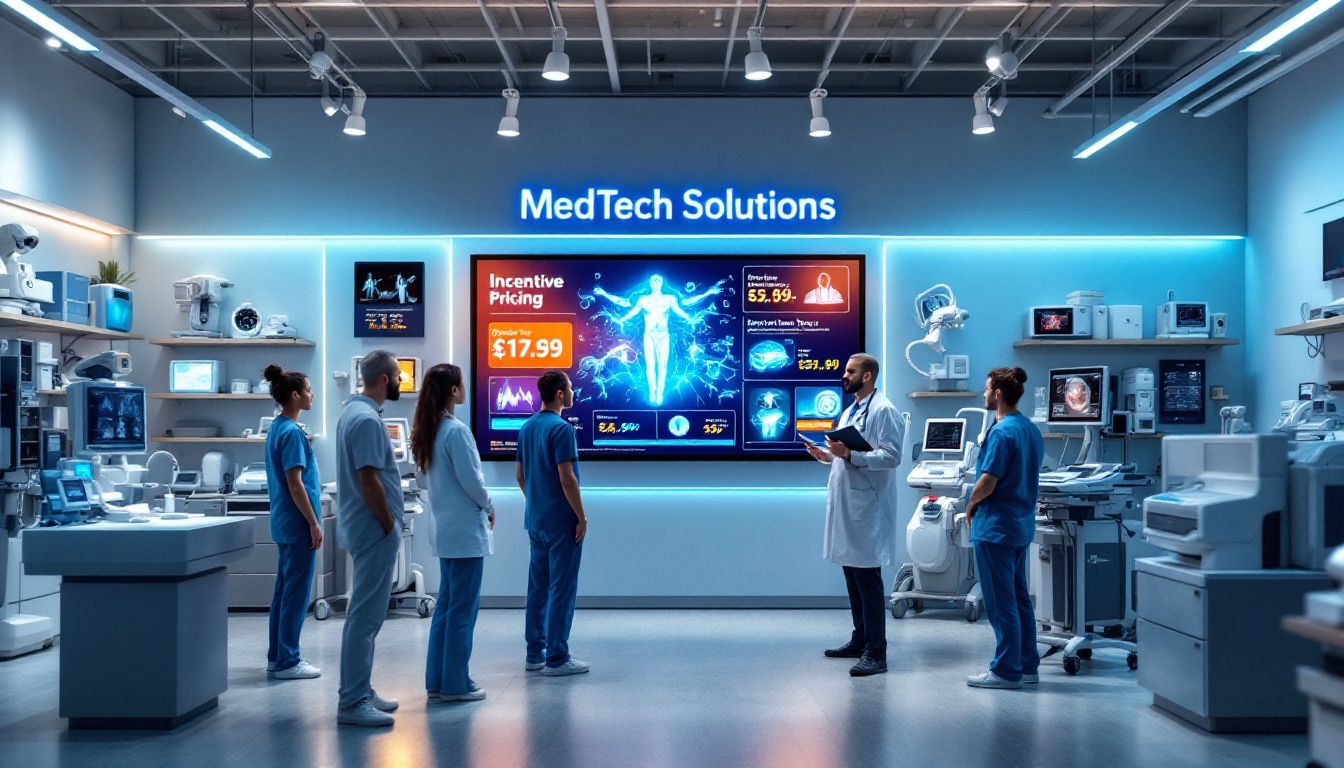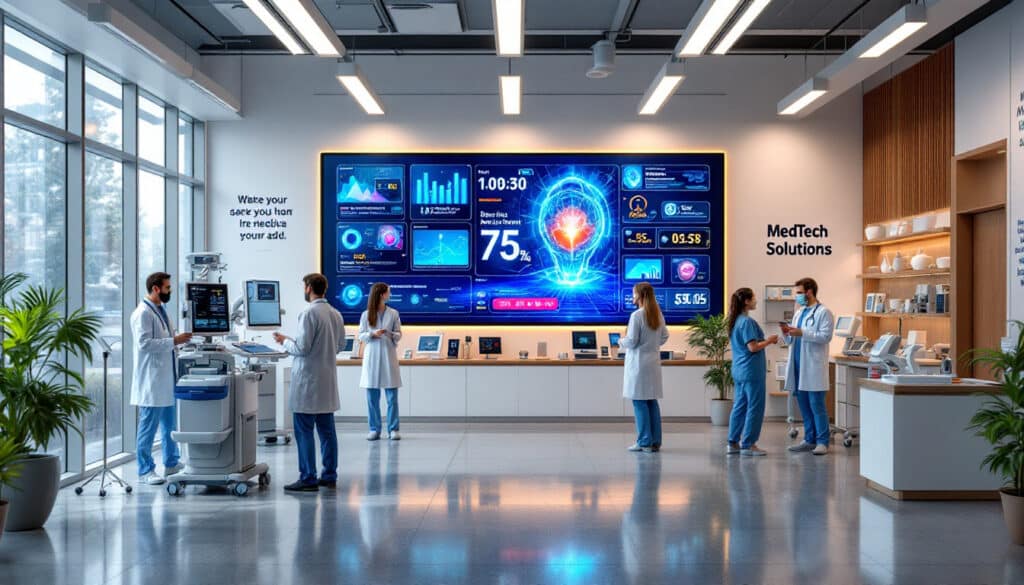The recent price increases are disrupting the medical device sector. Healthcare facilities anticipate a rise in costs, thus influencing their purchasing strategies. This trend could redefine access to care for many patients.
In light of these changes, hospitals are considering stocking medical equipment to protect themselves against price surges. According to analyses by GlobalData, this measure largely depends on the available budgets. Furthermore, essential procedures, such as aspiration thrombectomies, will continue to be performed, while elective procedures may be postponed. This situation highlights the tension between the profitability of institutions and the accessibility of care for patients.

In a constantly evolving sector, medical devices play a crucial role in the quality of care provided to patients. However, economic and regulatory challenges can hinder access to these essential technologies. The introduction of incentive pricing represents a promising strategy to encourage healthcare facilities to invest more in these indispensable pieces of equipment.
Why are medical devices essential for healthcare facilities?
Medical devices encompass a wide range of technologies, from diagnostic equipment to advanced surgical instruments. Their use not only improves the accuracy of diagnostics but also optimizes treatments and reduces patients’ recovery times. For example, medical imaging devices, such as MRIs and CT scanners, provide a detailed view of patients’ health status, facilitating more targeted and effective interventions.
Moreover, innovation in medical devices contributes to the evolution of medical practices. Cutting-edge technologies, such as smart implants or remote monitoring devices, enable more proactive and personalized patient care. This technological advancement is essential to meet the growing demands for quality care and to tackle the challenges posed by an aging population.
Additionally, the availability and quality of medical devices directly influence the reputation and competitiveness of healthcare facilities. Modern and high-performance equipment not only attracts patients but also qualified healthcare professionals eager to work in a technologically advanced environment.
What are the current obstacles to procuring medical devices?
Despite their importance, many healthcare facilities face difficulties in procuring medical devices effectively. One of the main obstacles lies in the high cost of these devices. The limited budgets of hospitals and clinics may restrict their ability to invest in advanced technologies, thereby compromising the quality of care offered.
Fluctuations in medical device prices, often influenced by customs tariffs and international trade policies, add further uncertainty. For example, the increase in tariffs imposed by certain countries can lead to a substantial rise in the costs of imported devices, making their acquisition even more expensive for healthcare facilities.
Furthermore, the complexity of supply chains and delivery times can also pose major obstacles. Interruptions in supply can lead to critical shortages of essential devices, directly impacting facilities’ ability to provide quality care.
Finally, the lack of appropriate financing mechanisms or subsidies limits facilities’ ability to anticipate and manage cost fluctuations. Without adequate financial support, it becomes difficult for hospitals to plan their purchases effectively and invest in innovative technologies.
How can incentive pricing resolve these issues?
Incentive pricing represents a potential solution to overcome the financial and logistical obstacles related to procuring medical devices. By offering price reductions or financial benefits to healthcare facilities, these tariffs encourage investment in high-quality equipment without burdening hospitals’ budgets.
For instance, volume discount programs can be implemented, where facilities that purchase in large quantities benefit from reduced rates. This approach not only lowers the unit costs of medical devices but also ensures a regular and stable supply, thereby minimizing the risk of shortages.
Moreover, subsidies and tax credits can be used to alleviate the financial burden of investments in medical devices. By reducing the overall cost of purchases, institutions are incentivized to modernize their equipment and adopt innovative technologies more rapidly.
Incentive pricing can also include clauses for free maintenance and technical support for a specified period, adding extra value to the initial investment. This not only ensures the proper functioning of the devices but also their long-term viability, thereby enhancing healthcare facilities’ confidence in their investments.
What strategies should be implemented to optimize incentive pricing?
To maximize the impact of incentive pricing, it is essential to develop well-thought-out strategies tailored to the specific needs of healthcare facilities. Here are some effective approaches:
Needs analysis and budget planning
A thorough analysis of the needs for medical devices is the first step in determining the most appropriate types of incentive pricing. By understanding the priorities and budget constraints of each facility, it is possible to design pricing programs that precisely meet their expectations.
Partnerships with suppliers
Establishing strong partnerships with medical device suppliers allows for negotiating preferential rates and ensuring better service quality. These collaborations can include volume agreements, fixed price guarantees, or exclusive offers on certain products.
Use of technology for purchase management
The integration of purchase management systems based on artificial intelligence and data analysis can optimize the procurement processes for medical devices. These tools enable forecasting future needs, identifying the best offers, and managing inventory more effectively.
Case studies: success of incentive pricing in the medical sector
Several healthcare facilities have already demonstrated the effectiveness of incentive pricing in improving their procurement of medical devices. For example, a large public hospital implemented a volume discount program for the purchase of diagnostic devices. As a result, the hospital was able to save 15% on its annual purchases while modernizing its equipment inventory.
Similarly, a private clinic specializing in orthopedics benefited from specific subsidies for the acquisition of joint reconstruction devices. Thanks to these financial aids, the clinic was able to introduce new technologies, thereby improving surgical outcomes and patient satisfaction.
These examples illustrate how well-designed incentive pricing can not only reduce costs but also encourage the adoption of advanced technologies, thereby strengthening healthcare facilities’ ability to provide high-quality care.
What are the challenges of implementing incentive pricing?
Although incentive pricing offers many advantages, its implementation is not without challenges. One of the main obstacles lies in the complexity of negotiating agreements with suppliers. It is crucial to strike a balance between reduced costs for healthcare facilities and the profitability required for medical device suppliers.
Moreover, the variation in needs and budgets among different facilities can complicate the standardization of incentive pricing. Each hospital or clinic has specific requirements, making it essential to customize offers to meet these diverse needs without compromising the overall efficiency of the program.
Managing and monitoring incentive pricing programs also require additional resources. Control and evaluation systems must be established to ensure that incentives are correctly applied and that financial and operational objectives are met.
Finally, the acceptance and adoption of incentive pricing by administrative and medical teams may present a challenge. It is crucial to inform and train staff on the benefits of these programs to ensure optimal use and maximize benefits for the entire facility.
The future of incentive pricing in the medical device sector
In the future, incentive pricing is expected to play an increasingly important role in the dynamics of medical device procurement. With the ongoing evolution of technologies and the need to maintain high standards of care, healthcare facilities will seek to optimize their investments to remain competitive.
The integration of artificial intelligence and predictive analytics in purchase management could make incentive pricing even more effective by allowing for increased customization of offers and better anticipation of future needs.
Furthermore, international collaboration and policy initiatives aimed at harmonizing regulations and trade practices could facilitate access to quality medical devices at competitive prices. By fostering a more transparent and collaborative environment, incentive pricing can contribute to better distribution of medical technologies, ensuring that all healthcare facilities have the necessary tools to provide exceptional care.
In conclusion, incentive pricing represents a significant opportunity to transform the procurement of medical devices. By overcoming financial and logistical obstacles, these incentives allow healthcare facilities to focus on their primary mission: improving the health and well-being of patients.
Incentive pricing represents a crucial strategy to encourage healthcare facilities to effectively procure medical devices. By offering reductions or financial benefits, these tariffs can alleviate budget constraints while ensuring a constant and quality supply of necessary equipment. This is particularly crucial in a context where the costs of medical devices can fluctuate due to external factors such as customs tariffs or supply chain disruptions.
By adopting incentive pricing policies, hospitals and clinics are further encouraged to anticipate their needs for medical equipment, thus avoiding critical shortages that can compromise the quality of patient care. In addition, these tariffs promote more proactive resource management, enabling healthcare facilities to strategically plan their purchases and invest in innovative technologies without jeopardizing their financial stability.
Moreover, incentive pricing can stimulate competitiveness in the medical device market by encouraging manufacturers to innovate and maintain high-quality standards. This dynamic benefits not only healthcare facilities, which gain access to cutting-edge equipment, but also patients, who benefit from more effective and safer treatments.
Finally, the implementation of incentive pricing fits into a broader vision of sustainability and efficiency in healthcare systems. By optimizing costs associated with medical devices, facilities can reallocate resources to other priority areas, such as research, staff training, or infrastructure improvement. Thus, incentive pricing is not limited to merely reducing costs but contributes to strengthening the entire healthcare ecosystem, ensuring better patient care and increased resilience in facing future challenges.












